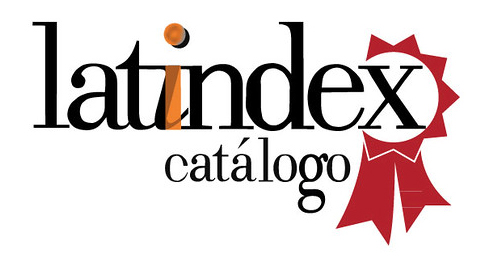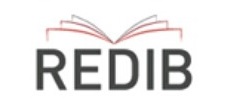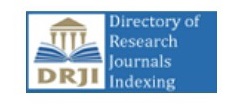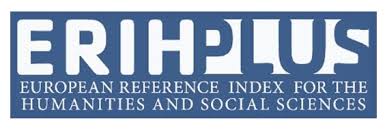Wind suction resistance of innovative roofing kits based on ceramic tiles. A preliminar technical assessment = Resistencia a la succión del viento de sistemas innovadores de tejados con tejas cerámicas. Evaluación técnica preliminar
DOI:
https://doi.org/10.20868/bma.2019.3.4036Keywords:
Innovative roofing kit, technical assessment, ceramic tiles, wind uplift, Sistema innovador de cubierta, evaluación técnica, tejas cerámicas, succión de vientoAbstract
DuPitched roof based on tiles avoid wind uplift by providing and adequate mechanically fixing pattern to support. This goal should be achieved according to specifications and zoning maps from the installation standard for ceramic tiles roofs UNE 136020 recognized by Basic Document CTE DB-HS-1 for ceramic tiles roofing. Nevertheless, this Document and DB-SE-AE refers to an updated and different map for the calculation of wind actions for façades. In this incoherent regulation context, new full-dry installed innovative roofing kits require of a preliminary and faster procedure for technical assessment regarding its fitness for use. This scope requires focusing firstly on the most critical requirement, Safety, considering only its wind uplift behaviour. For this purpose, once objectives were defined, the State of the Art analyzed, an experimental study was carried out regarding pull out test of fixing tiles screws to profiles and wind uplift of kit according to EN 14437, completed with worksite inspection. The results lead to the principal conclusion: It was feasible to carry out a preliminary and partial technical evaluation of fitness for use of roofing kits based on the contribution to compliance with the basic safety requirement by determining the resistance to wind suction considering the application of the DB-SE-AE of CTE.
Resumen
Las cubiertas inclinadas a base de tejas evitan su levantamiento por el viento mediante un adecuado patrón de fijación mecánica a su elemento soporte. Este objetivo se alcanzaría cumpliendo las especificaciones del texto y mapas de datos de la Norma UNE 136020, para montaje de tejados con tejas cerámicas, reconocida por el Documento Básico del CTE DB-HS-1. Sin embargo, este mismo documento considera otros criterios de cálculo y mapas de datos diferentes para fachadas. En este incoherente contexto normativo, nuevos sistemas innovadores de tejados a base de tejas instalados totalmente en seco, requieren de un procedimiento preliminar y rápido para la evaluación técnica de su aptitud de empleo. Este objetivo supone dirigirse en primer lugar hacia la evaluación de la exigencia más crítica, la Seguridad, considerando únicamente el comportamiento frente a la succión del viento del sistema. Para este fin, una vez definidos los objetivos y analizado el estado del conocimiento, se realizó un estudio experimental relativao a la resistencia al arrancamiento del tornillo que fija la teja al rastrel así como del comportamiento del sistema frente a la succión del viento según los procedimientos de la Norma UNE EN 14437, completado con una visita previa de obra. Se concluyó que sí era viable realizar una evaluación técnica preliminar y favorable de la idoneidad de empleo de un sistema innovador de cubiertas, centrándose en la contribución a la Seguridad, considerando la aplicación del CTE-DB-SE-AE.
Downloads
References
Daniel J.Smith et al. “An Historical perspective on the wind resistance of clay and concrete roofing tiles. Interface. November 2014.
Gerard Blachére. Saber construir: Habilidad, durabilidad, economía de los edificios Editores Técnicos Asociados. Barcelona. 1967. Traducido del Francés por Buenaventura Bassegoda Muste. Depósito legal: B 35417-1966.
Norma Tecnológica de la Edificación NTE-QTT Cubiertas de tejados de tejas (1974)
UNE 136020: 2004. Código de práctica para el diseño y montaje de cubiertas con tejas cerámicas
CTE. Documento Básico de Salubridad. 2006. Disponible en web: https://www.codigotecnico.org/images/stories/pdf/salubridad/DcmHS.pdf
CTE. Documento Básico de Seguridad Estructural. 2006. Acciones en la Edificación”.2006: https://www.codigotecnico.org/images/stories/pdf/seguridadEstructural/DBSE-AE.pdf
http://dit.ietcc.csic.es. IETcc-CSIC. 2018.
Regulation (EU) NO 305/2011 of the European Parliament and of the council of laying down harmonised conditions for the marketing of construction products and repealing Council Directive 89/106/EEC. OJEU L/88, 4.4.2011, pages 5 - 43.
UNE EN 1304: 2014. Tejas y piezas auxiliares de arcilla cocida. Definiciones y especificaciones de producto.
AISI S905-13.2013. Test Standard for Cold-Formed –Steel Connections. American Iron and Steel Institute
ASTM C1568 - 08(2013) Standard Test Method for Wind Resistance of Concrete and Clay Roof Tiles (Mechanical Uplift Resistance Method)
ASTM C1569 - 03(2016) Standard Test Method for Wind Resistance of Concrete and Clay Roof Tiles (Wind Tunnel Method)
ASTM C1570 - 03(2016) Standard Test Method for Wind Resistance of Concrete and Clay Roof Tiles (Air Permeability Method)
E. Santiago y E. Gracia (Hispalyt).”Ventajas de la cubierta en seco con teja cerámica”. Revista
conarquitectura nº 59. Julio 2016.
UNE EN 14437:2012. Determinación de la resistencia al levantamiento de las tejas de arcilla cocida o de hormigón instaladas. Método de ensayo del sistema de tejado.
F. Marín Andrés y Mª I. Sánchez Rojas. “Método de ensayo normalizado del comportamiento de los tejados a la acción combinada de la lluvia y del viento”. Materiales de construcción. Vol. 58,291,11-117. Jul-Sept. 2008.
CEN TR 15607:2012. Hygrothermal performance of buildings – Resistance to wind-driven rain of roof coverings with discontinuosly laid small elements – Test methods.
Downloads
Published
Issue
Section
License
The originals of Building & Management magazine are property of the Universidad Politécnica de Madrid, being necessary to cite the origin of any partial or total reproduction.
All the original articles published in Building & Management are subject to discussion and comments from our readers. Opinions should be sent to the journal's email address, within a period of three months, starting from the date of publication.
Authors retain the copyright of the papers and ensure B&M the right to have a Creative Commons license, Attribution-NonCommercial-NoDerivatives 4.0 International (CC BY-NC-ND 4.0), that allow others to share the article within an author recognition and non commercial use.
Authors can also establish independently aditional agreements for the not exclusive distribution of the article published versión in the e-journal (as, for example, to place it in an institutional repository or to publish it in a book).
Unless otherwise indicated, all contents of the electronic edition of Building & Management are distributed under a Creative Commons license and distribution.




 <
< 








